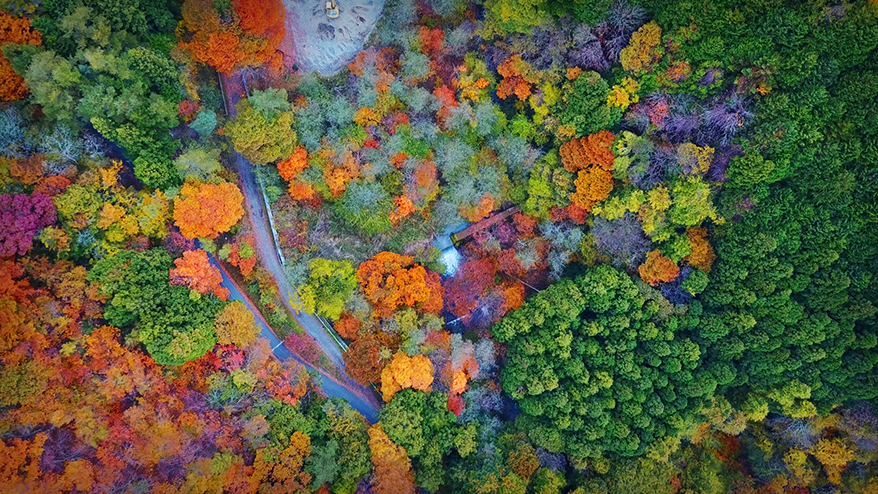Hello, this is Kawarazaki from the design department.
This is already the third article I've written about drones since last year (you can find the first and second articles here).
In the previous article, we talked about drones for beginners and people who don't own a drone, but this time, as an intermediate level article, we would like to talk about shooting techniques for taking attractive aerial footage.
Among photography techniques, there are some that have names that make you want to say them, like special moves.
This time, we will introduce some of these shooting techniques with some practical examples.
1.Crane shot
This technique involves filming while retreating away from the subject, gradually capturing a wider view of the entire landscape including the subject, resulting in spectacular footage that is unique to drones.
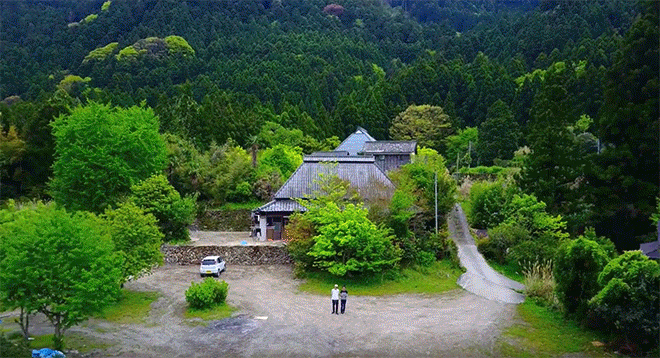
Filmed from the home of one of our members who lives in Kamiyama, Tokushima Prefecture. By gradually capturing the entire forest, the footage has a large scale.
This is how the pros use it!
As we've mentioned before, a video of a couple who traveled on their honeymoon with a drone uses crane shots to capture the stunning scenery of each country.
From "A Honeymoon Trip Around the World with a Drone in Hand - 400 Days of Spectacular Views in the Sky."
2. Bird's Eye
This is a technique where you shoot while moving the camera straight down, as if you were looking from a bird's eye view. It doesn't require any difficult filming techniques, and it allows you to take fascinating images from angles that people normally can't see, so it's my personal favorite filming technique.
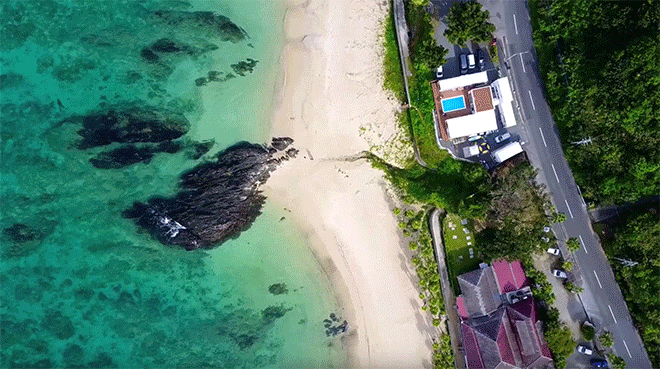
Taken on Amami Oshima. By pointing the camera straight down, the emerald green ocean is captured in a more captivating way.
This is how the pros use it!
I was particularly impressed by a JT commercial that used this technique, which connected all of the footage from a direct overhead angle to create a sense of unity and story-like nature.
JT: "One thing at a time, towards the future." From the episode on Cooperative Coexistence.
3. Nose-in circle
This is a technique in which you point the camera at a subject and rotate around it to take the picture.
Since it can capture moving images while constantly capturing the subject, it is often seen being used in artists' music videos.
Since it requires some technique to control, this flying method is often used for piloting practice.
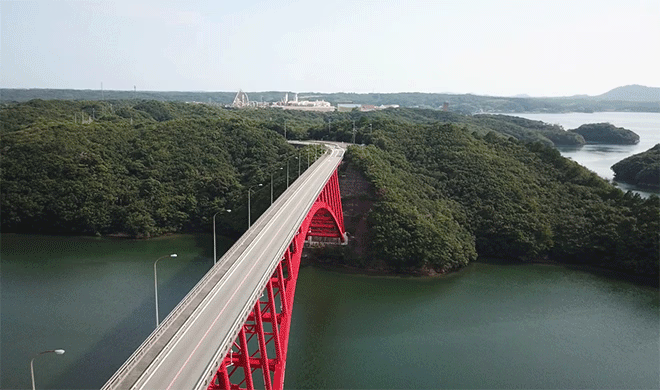
Shooting the distinctive red Matoya Bay Bridge in Mie Prefecture. By orbiting the bridge and shooting around it, the bridge stands out in the footage.
This is how the pros use it!
This technique was also used in the music video for Mr.Children's famous song, and in my circle, we call this the "tomorrow never knows shot." (I think it was shot with a helicopter rather than a drone at the time.)
From Mr.Children's "Tomorrow never knows"
4. Reveal Shot
This is a technique for bringing a subject into the frame midway through a shot. For example, it is used to give a story-like quality to a film, such as gradually showing a destination or subject at the opening of a movie.
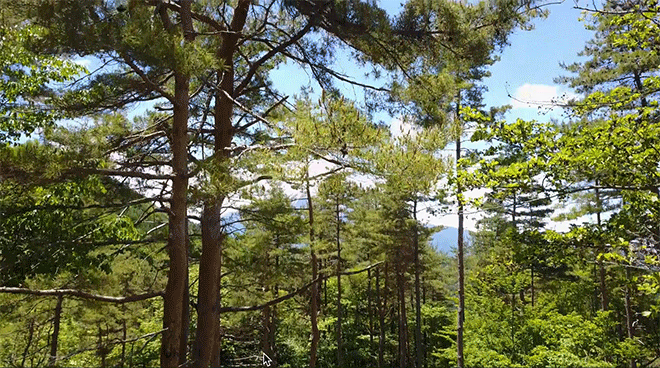
Photographing Mt. Fuji from Mt. Shakushi in Yamanashi Prefecture. The drone slowly rose up and framed Mt. Fuji through the trees.
This is how the pros use it!
The video below is a reveal shot of New York's skyscrapers. The shot where the drone glides over the ocean and gradually brings the skyscrapers into frame looks like a scene from a movie.
From "NYC Drone Phantom 3 4k".
5. Low Flying Shot
This is a technique for filming by flying low. The drone can fly close to the subject, allowing you to capture dynamic footage with a sense of speed.
Compared to other techniques, there is a higher chance of hitting people or obstacles, so care must be taken when throwing.
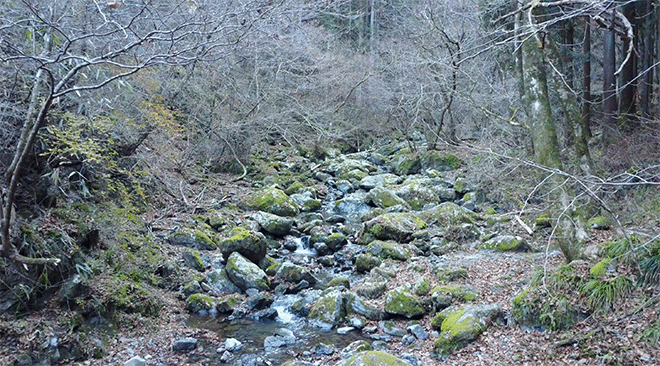
The footage was shot at a low altitude through the forests of Okutama. Flying close to the ground creates a sense of speed.
This is how the pros use it!
This technique is also often used in music video shoots, and by filming close to the artist, it creates dynamic footage.
From Keyakizaka46's "There is only love in the world."
6. Dolly Zoom
This is a technique for shooting with a drone equipped with a zoom lens. By moving the drone backwards and zooming in at the same time, the perspective of the background changes without changing the size of the subject. (You can also zoom out while moving forward.)
In the drone world, this technique has become more widely known since the recent release of the MAVIC2 ZOOM , a drone equipped with a zoom function.
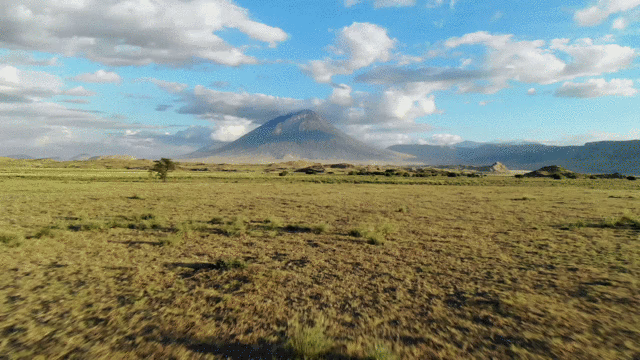
Dolly zoom on the MAVIC2 ZOOM. (From the product website)
This is how the pros use it!
Also known as the "Vertigo Shot," this shot has been seen in many films since its use in Hitchcock's films (though it is not shot with a drone).
A compilation of movie scenes where dolly zoom was used. The background appears distorted, adding an accent to the scene.
What did you think?
Drone footage has become more commonplace recently, so it's becoming necessary not just to take pictures but also to make full use of these filming techniques to create compelling footage.
If you have a drone, try using the names of the techniques out loud when taking photos, such as "Reveal shot!!" and "Dream zoom!!"
